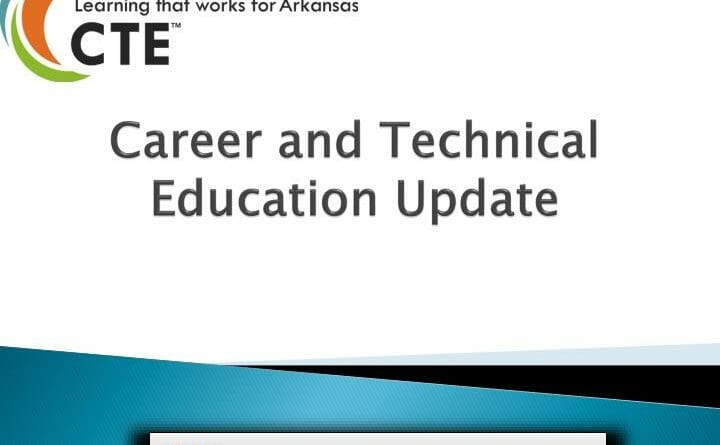CTE Plan in Arkansas, 16 Job Clusters, 64 Programs
The revised career and technical education plan that targets students in grades five through 12 and is newly approved June 26 by the U.S. Department of Education “presents opportunities like no other,” said Angela Kremers, director for the Arkansas Division of Career and Technical Education.
“Parents may still have the perception of what CTE is from what was there when they were in school, when it was called vocational education or vocational-agricultural education,” Kremers said. “It is not the same. We have so many innovative programs — such as cybersecurity and unmanned aerial systems or drones. You name it, we have it.
“This is a lot more innovative and sophisticated than in years past,” she said.
Commonly referred to as Perkins V in both Arkansas and in the nation, the new plan is the result of the Strengthening Career and Technical Education for the 2st Century Act, which President Donald Trump signed into law in July 2018.
The federal act is the reauthorization of the Carl D. Perkins Career and Technical Education Act of 2006 or Perkins IV.
The reauthorized law is intended to strengthen connections among schools, colleges and employers to prepare students for high-skill, high-demand, high-wage careers whenever students join the job market — be it after high school or during and after post-secondary education.
“With Perkins V — this is not the blue collar pathway. This is all-collar,” Kremers said. “We don’t want students to feel like they are tracked. When they are part of CTE, they may become an engineer. They may become a physician. They may be a welder. It really is to prepare them for any path that they choose. It just gives them a very closely connected program of study based on their interests into whatever path they may choose.”
Perkins V comes with federal funding to the state — about $13.2 million in this new fiscal year and in each subsequent year, depending on a formula that takes into account U.S. Census data on population and poverty.
About 85% of the money goes to the school systems to supplement career and technical education classroom equipment and to offset other expenses, including the cost of exams students take at the completion of their program of studies to be certified in the field.
In 2018-19, the last year for which data is available, there were 213,329 students in career education programs. A total of 43,158 industry-recognized exams were given to Arkansas career and technical education students that year, 32,584 of which received passing scores — a 75.5% pass rate.
Arkansas offers 16 career clusters that overarch 64 programs of study. Each program of study includes three courses that lead to an exam for an industry or career-recognized certificate.
One example of the career clusters is the new Education and Training cluster, leading to a teacher assistant certification, Kremers said. Examples of other clusters are architecture and construction; health sciences; hospitality and tourism; transportation, distribution and logistics; manufacturing; agriculture, food and natural resources; and science, technology, engineering and mathematics or STEM subjects.
Kremers said the strengths of the new plan include an emphasis on ensuring equity in supporting students in their career preparations and the alignment of the programs with the workforce.
“We had to completely overhaul every single one of our programs of study and align those 100 % with high-skill, high-wage and in-demand jobs,” she said, adding that some programs had to be eliminated if they were no longer as relevant as they once were.
“We didn’t want any ‘going nowhere’ jobs. We wanted equal opportunities for all students and for all students to be prepared for jobs that at least produce at a minimum a livable wage.”

Source: https://www.arkansasonline.com/news/2020/jul/04/state-updates-career-tech-education-plan/?news-arkansas&utm_source=knewz

